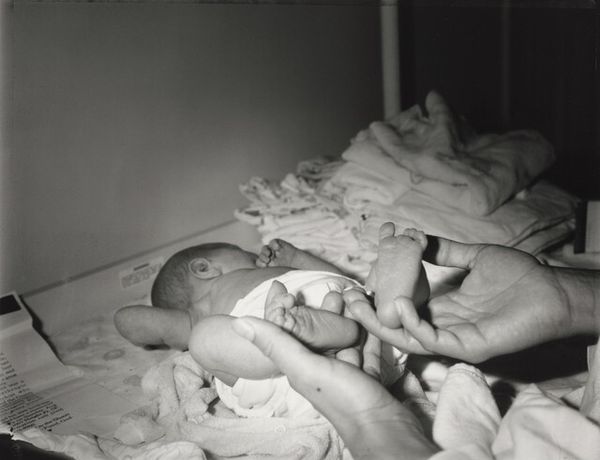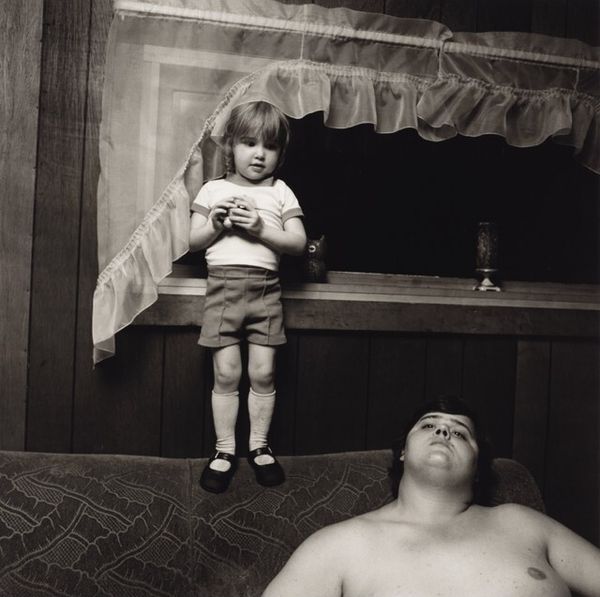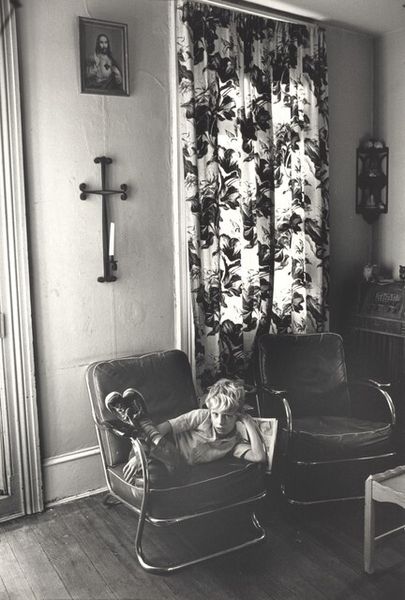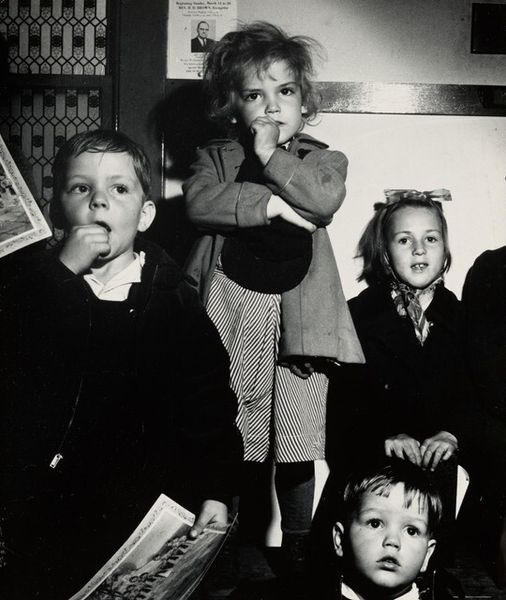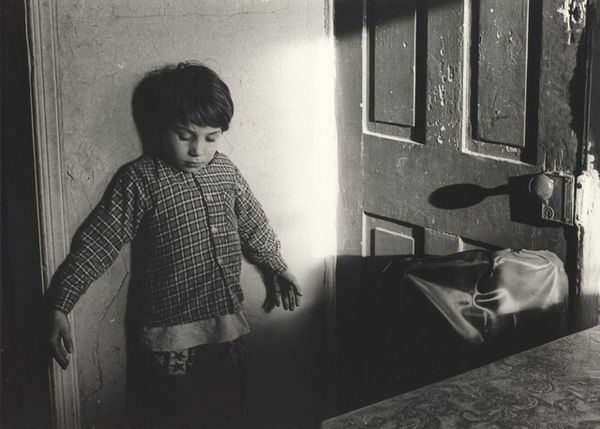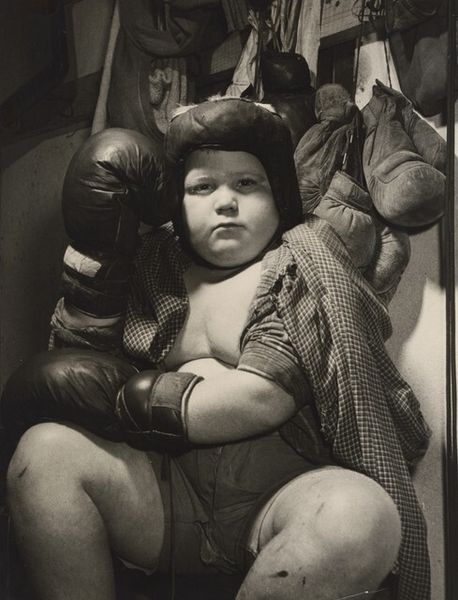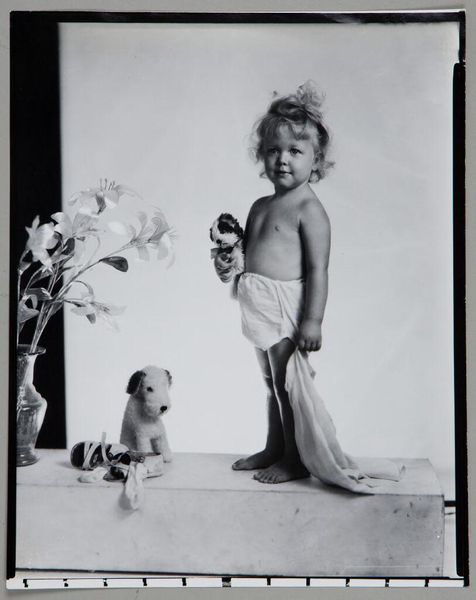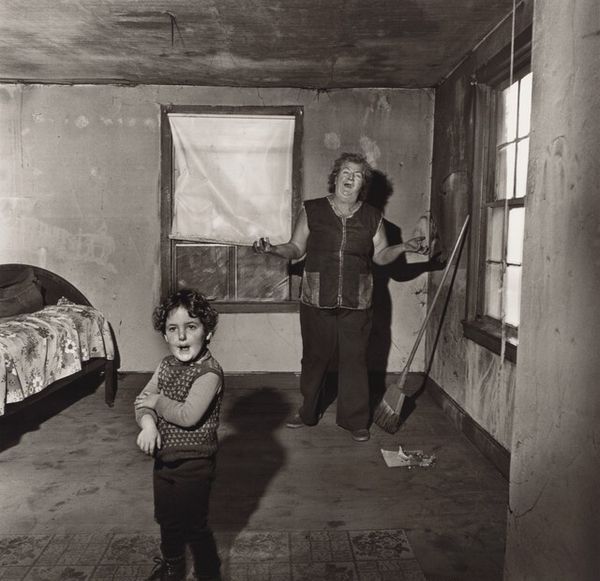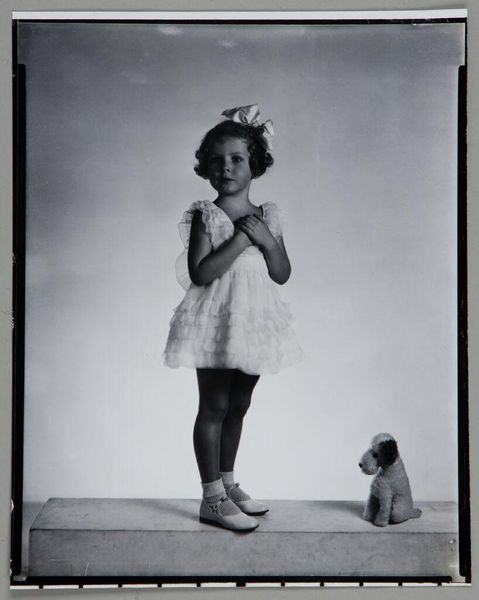
photography, gelatin-silver-print
#
portrait
#
black and white photography
#
black and white format
#
social-realism
#
archive photography
#
street-photography
#
photography
#
historical photography
#
black and white
#
gelatin-silver-print
#
monochrome photography
#
monochrome
Dimensions: image: 17 × 16.2 cm (6 11/16 × 6 3/8 in.) sheet: 25.6 × 20.5 cm (10 1/16 × 8 1/16 in.)
Copyright: National Gallery of Art: CC0 1.0
Curator: This is Gordon Parks’ “Doll Test, Harlem, New York.” Likely taken sometime between 1947 and 2019, we’re viewing a gelatin-silver print that freezes a loaded moment in time. What springs to mind for you? Editor: A kind of quiet unease. It's stark, the contrast intense. And the child's upward gaze… there's such a gravity to it, as if he's trying to decipher a puzzle far beyond his years. Curator: That gravity you're sensing is no accident. Parks was a master at layering symbolism. Notice the dolls – one white, one Black – held aloft by hands just outside the frame, almost puppeteers of this child's perception. Editor: Right, they are so obviously presented. Dolls often symbolize innocence, play, childhood. But here, they’re tools. The visual symbolism alludes to cultural constructs, perhaps subconscious biases inflicted on children. The choice between dolls becomes a painful allegory. Curator: Exactly. Parks directly references the famous "doll test" experiments which revealed the psychological damage caused by segregation. And by setting it in Harlem, he’s rooting it in a specific cultural context. Editor: I can’t help but feel how profoundly the image resonates across generations. Even decades later, this single frame speaks volumes about identity, prejudice, and the fragile self-image of children facing systemic racism. The monochrome enforces this feeling. Curator: It's fascinating how Parks can distill such complex issues into a single, visually striking photograph. He’s not just documenting, he’s forcing a confrontation with uncomfortable truths. Editor: This is an image demanding the viewer acknowledges that what happens in childhood leaves long-lasting scars. We are compelled to think about that as the real issue at play in the image, what is it that children see when looking at these dolls and by extension themselves? Curator: Precisely. Parks' image invites reflection on these complex issues, forcing us to think about history's reverberations and ongoing struggles with race. Editor: It serves as a powerful, poignant reminder of a painful legacy. Thanks to Parks for having the courage to see what so many tried not to.
Comments
No comments
Be the first to comment and join the conversation on the ultimate creative platform.


